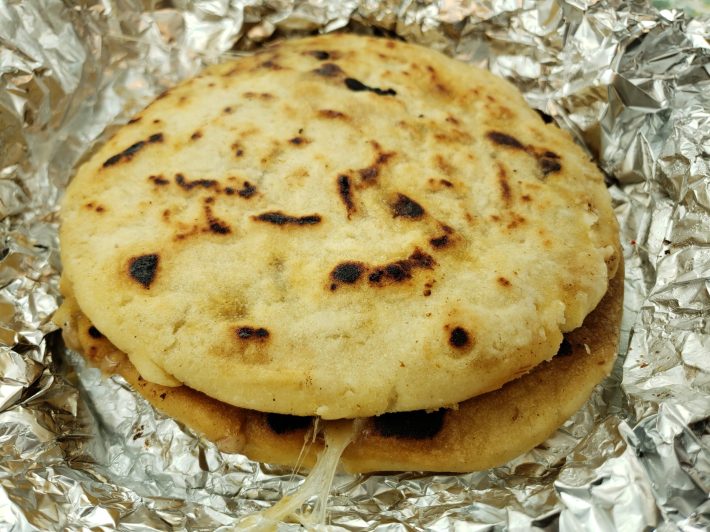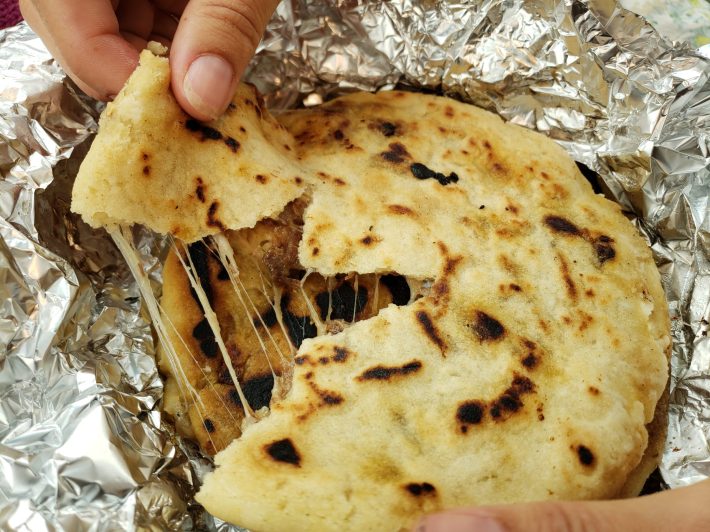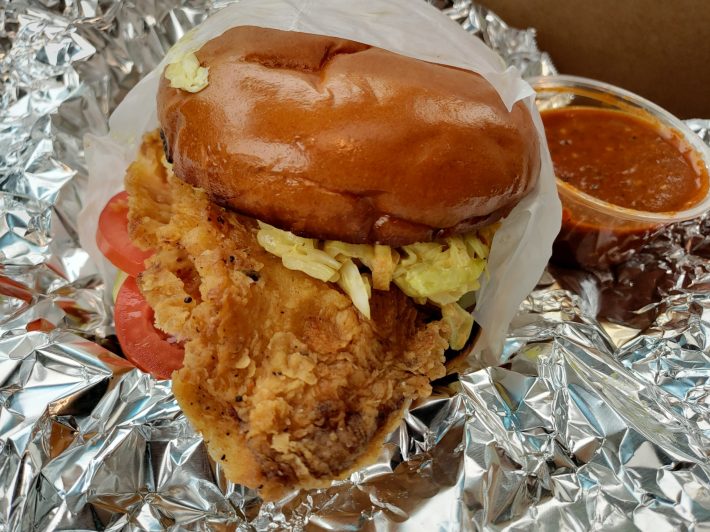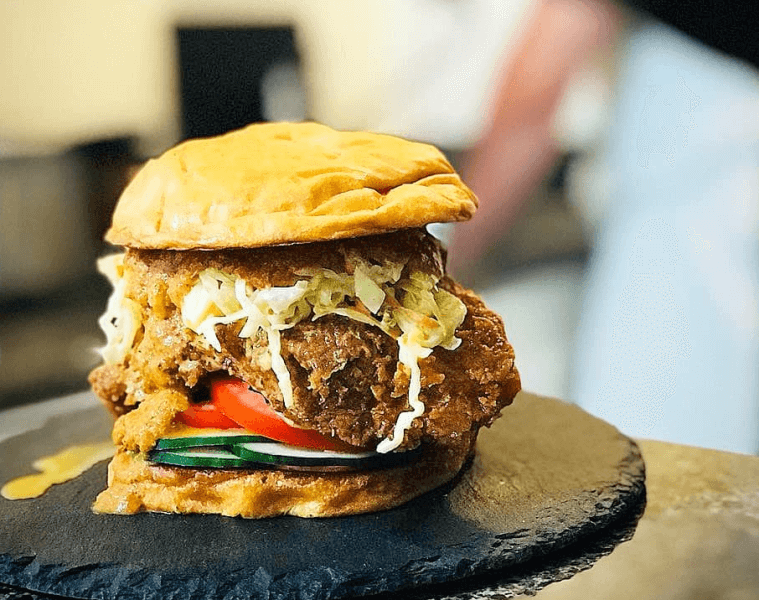[dropcap size=big]T[/dropcap]here remain few ingredients Los Angeles is yet to see folded inside a tortilla and christened a taco.
L.A.'s pupusa scene generally hesitates to buck tradition, however, sticking to the holy trinity of cheese, beans, and chicharrónes you’ll find from the streetside griddles dotting Vermont Avenue and Winnetka Boulevard to familiar restaurant names like Jaragua and Las Cazuelas.
René Alesandro Coreas, the owner of Walking Spanish, may be the chef to turn these conservative tendencies around in Salvadoran food, shining a wider light on the cuisine of Central America in the process.
The 27-year-old’s pupusas include fillings such as birria de chivo—with cilantro replacing loroco—rajas con queso, carne asada, Korean short rib based on a favorite kalbi dish at Koreatown’s Sun Nong Dan, and chicharrón braised in salsa verde. He even makes a pupusa with fried ham and mornay sauce riffing on croque monsieur.
Raised in Cudahy, Coreas leaped into the cooking game as a 19-year-old while helping his Mexican stepfather’s catering and barbecue businesses, an apprenticeship that pushed him into the professional restaurant world at 23.
When Lincoln Carson’s Bon Temps shuttered in the Arts District this past April, leaving Coreas jobless, he returned to his junior sous chef post at Petit Trois in Sherman Oaks, where he remains today.
Rather than use his downtime to recuperate from an intense schedule, he felt strongly that it was time to build something of his own.
“I’ve always wanted to start my own business,” he tells L.A. Taco. “There’s so much opportunity for street food at the moment, so I just started small with the understanding that if you serve good food, people will always come back.”

Coreas took the term “Walking Spanish” from Tom Waits’ death row ditty of the same name, visualizing a meal so good, one could die happily after taking it down.
Today he offers his cooking every Friday through direct messaging on Instagram for local delivery or pickup outside his San Gabriel Valley apartment.
In addition to pupusas both orthodox—he uses his grandma’s recipe— and original, the menu hinges on a fried chicken sandwich paying ode to pan con pollo. All dishes come with his distinctive relajo and homemade curtido.
“I can get creative with the pupusas and everything,” he says, “But I try not to mess with the curtido.”
L.A. Taco tore into a handful of Walking Spanish’s recipes on a recent Friday afternoon, beneath a storm of dead ashes swirling down from the SGV sky, when Coreas was offering his kalbi-stuffed pupusas.

The plump pupusas look primed to rupture: soft, disc-shaped mega-dumplings with yellow skins mottled in char scars from the griddle’s kiss. The edges are sturdy and the center skin thin, breaking apart easily to ooze stretchy strands of a queso Oaxaca and queso panela blend.
Beyond the enjoyable texture and attention-grabbing innards, the dominant experience here is piping-hot corn.
The pupusas have a pronouncedly maize-forward flavor, a result of the maseca Coreas acquires from friends in the Guatemalan tamal game. He has observed poached onions going into the masa but hasn’t unlocked all of its secrets. He himself adds butter, olive oil, and salt when preparing pupusas.
Coreas’ curtido is a creeper, its acidic and spicy virtues building while it plays flawless foil to shards of tender, sweetly-marinated short rib and gooey cheese.

The chicken sandwich centers on a pounded breast blanketed with a crisp golden batter spreading well beyond the borders of the brioche bun and utterly juicy bird. There are sporadic hits of salt and herbs, and a bundle of cucumbers, tomatoes, cabbage, and radishes delivering a massive crunch.
The relajo strikes like an aromatic marinara married to a smoky salsa de chile arbol, making an ideal sauce for slathering over everything and dipping scraps of bread, pupusa, and whatever else you have on hand right into.
Coreas’ hope is that he can use his cooking to bring more attention to Central American cuisine, with pupusas serving as a recognizable gateway to the region’s lesser-known flavors.
“I feel like there’s a huge spotlight on Mexican food and Cuban food, but there’s not much on Central American food, beyond pupusas,” he says. “Of course you have to start with something people are familiar with before you start implementing changes, techniques, or twists.”
Naturally, in an era of epic -ism and -schism, not everyone is down for Walking Spanish flying its freak flag.
“I’ve had some people say that I shouldn’t mess with pupusas,” Coreas says. “That if I play around too much, customers will walk away. All those negative comments can crush your ego.”
But Coreas’ vision goes beyond this current, homebound version of Walking Spanish. He anticipates a day when COVID-19 subsides so he can organize private dinners and pop-ups to unite his skills with his ambitions.
“To be honest, the pupusas and everything are great,” he says. “But I’d really love to implement the flavors of Central America into a little higher-end type of cooking. To try and put those flavors on the map more.”
Walking Spanish ~ Available Fridays for pick-up and delivery







